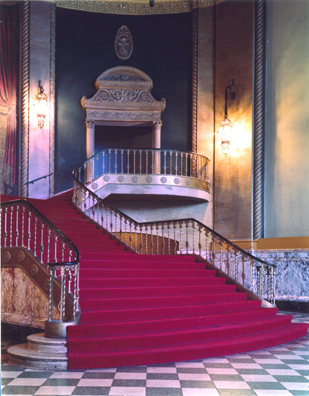



The Congress Theater
2135 N. Milwaukee Ave. Chicago, Illinois
60647 773-252-4000
| History and Description | ||||
|
The Congress Theater was designed in 1925 for Lubliner &
Trinz, who operated one of Chicago's largest movie theater chains
during the 1920's. The architect was Fridstein & Co., an
architectual-engineering company whose other designs include the
Belden-Stratford and Shoreland hotels and two other movie theaters,
the Harding and Tower (both demolished).The theater opened on
September 5, 1926. Besides showing movies, the theater also was a
vaudeville house on the prestigious Orpheum Circuit, compromised of
theaters throughout the country. Lubliner
& Trinz sold their theaters to Balaban & Katz, a rival
theater company, in 1929. The congress continued to show movies
under the management of this and other companies through the 1980s.
In 1990the theater was bought by Ray Spasenovski and his partner
James P. Peterson, who bought the building. The theater has hosted everything from weddings, The
International Mr. Leather, experimental music shows, movie
festivals, talent shows, visual and other fine arts, movie
locations, and special events. Oprah Winfrey used the lobby to shoot
her intro of her daily TV show. The Congress Theater is built of brown brick with white
terra-cotta trim. The theater entrance is dramatic with a four-story
terra-cotta fašade detailed with a Classical Revival-style pediment
and Italian Renaissance-style windows, pilasters, and low-relief
ornament. Decorative signboard frames flank multi-paned theater
doors. The store-apartment sections are simply detailed with white
terra-cotta window surrounds and decorative raised brickwork. In
addition, white terra cotta is used to highlight the theater's
secondary entrance facing Rockwell. |
||||
|
The Congress Theater was recognized as
"significant to the community" by the Chicago Historic Resources
Survey (1996). It was included in Great American Movie Theaters,
published by the National Trust for Historic Preservation in 1987.
The Theater Historical Society of America, a national organization
devoted to theater history and preservation, has published two
issues of its Marquee magazine (second quarter 1985 and first
quarter 1992) featuring the
congress. |
||||



